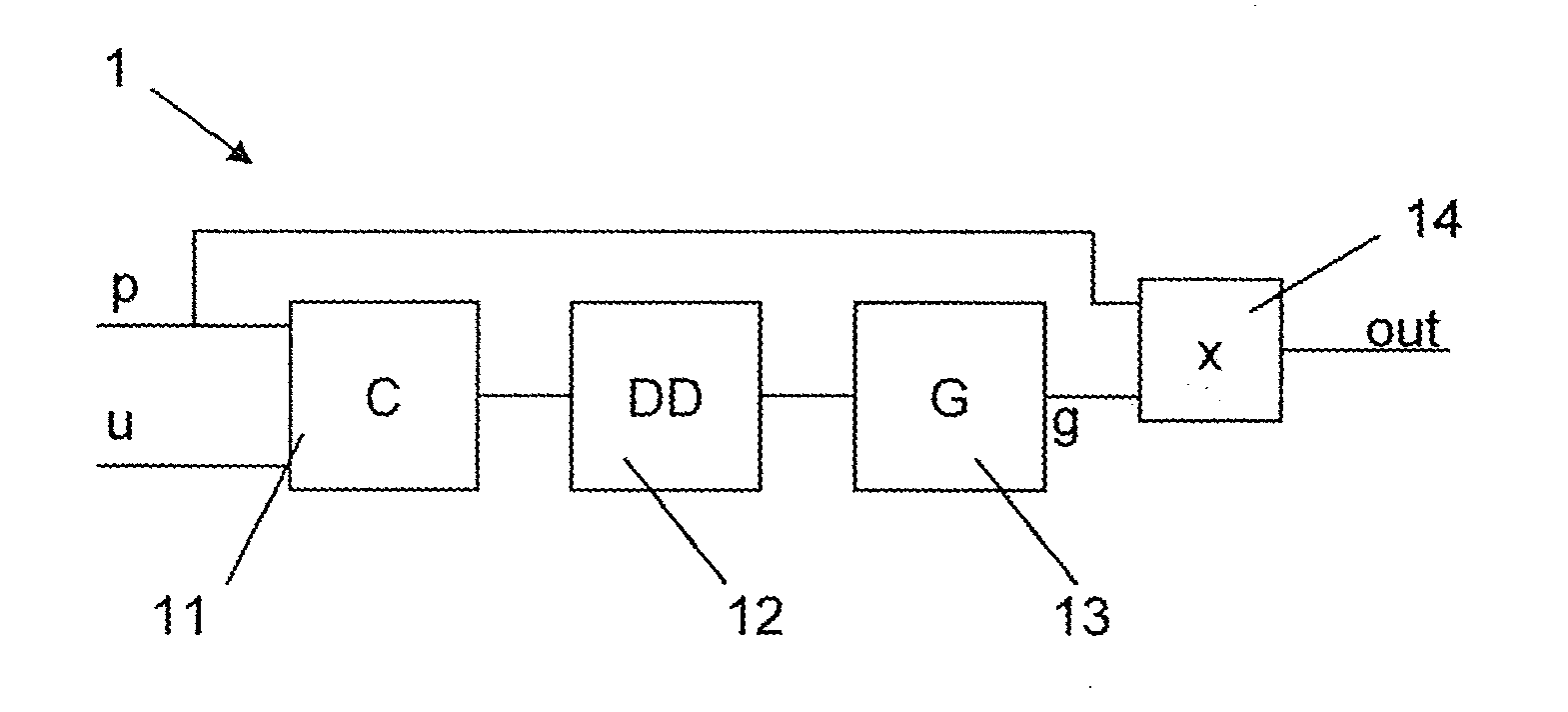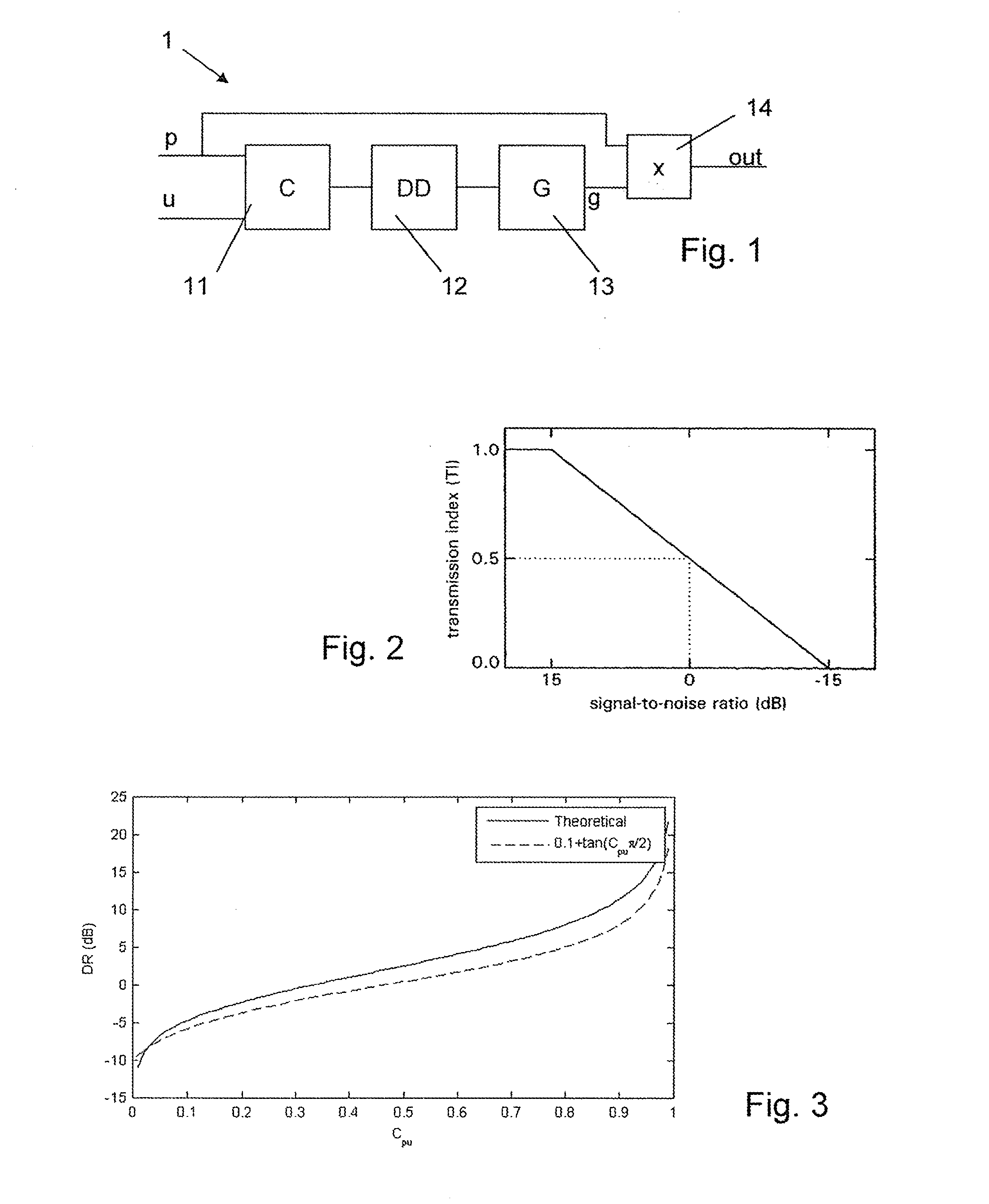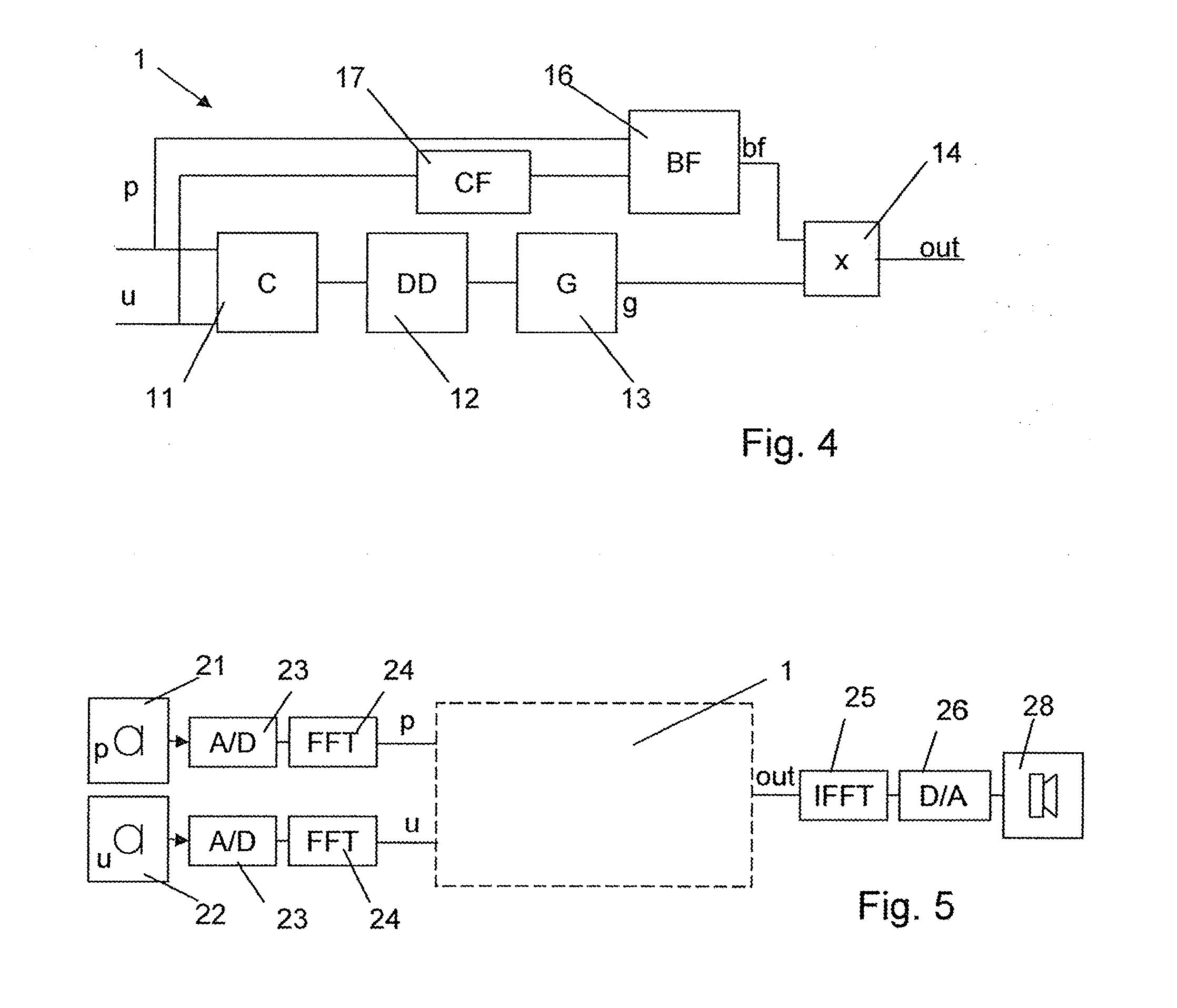Method of processing a signal in a hearing instrument, and hearing instrument
a hearing instrument and signal processing technology, applied in the direction of transmission, line-transmission, electrical apparatus, etc., can solve the problems of blind methods that can only produce encouraging results for highly-idealized non-realistic scenarios, and their complexity is far beyond what can currently be implemented in hearing instruments, so as to achieve satisfactory results and improve speech intelligibility
- Summary
- Abstract
- Description
- Claims
- Application Information
AI Technical Summary
Benefits of technology
Problems solved by technology
Method used
Image
Examples
Embodiment Construction
[0082]In accordance with FIG. 1, a pressure or pressure average signal p and a pressure difference or pressure gradient signal u are obtained, for example by a pressure microphone and a pressure difference microphone. The pressure microphone and the pressure difference microphone may be part of a microphone device as described and claimed in PCT / CH2011 / 000082. Alternatively, the pressure average signal p and the pressure difference signal u may be obtained in a conventional manner by combining the signals of two pressure microphones, carefully matching the magnitudes and relative phases of the signals as for example disclosed in EP 0 652 686 (Cezanne, Elko). As yet another alternative, instead of a pressure average signal p and a pressure difference signal u, another combination of signals with different directional dependencies may be obtained, for example two cardiod signals of opposite directional characteristics, as again disclosed in EP 0 652 686.
[0083]In a signal processing / de...
PUM
 Login to View More
Login to View More Abstract
Description
Claims
Application Information
 Login to View More
Login to View More - R&D
- Intellectual Property
- Life Sciences
- Materials
- Tech Scout
- Unparalleled Data Quality
- Higher Quality Content
- 60% Fewer Hallucinations
Browse by: Latest US Patents, China's latest patents, Technical Efficacy Thesaurus, Application Domain, Technology Topic, Popular Technical Reports.
© 2025 PatSnap. All rights reserved.Legal|Privacy policy|Modern Slavery Act Transparency Statement|Sitemap|About US| Contact US: help@patsnap.com



